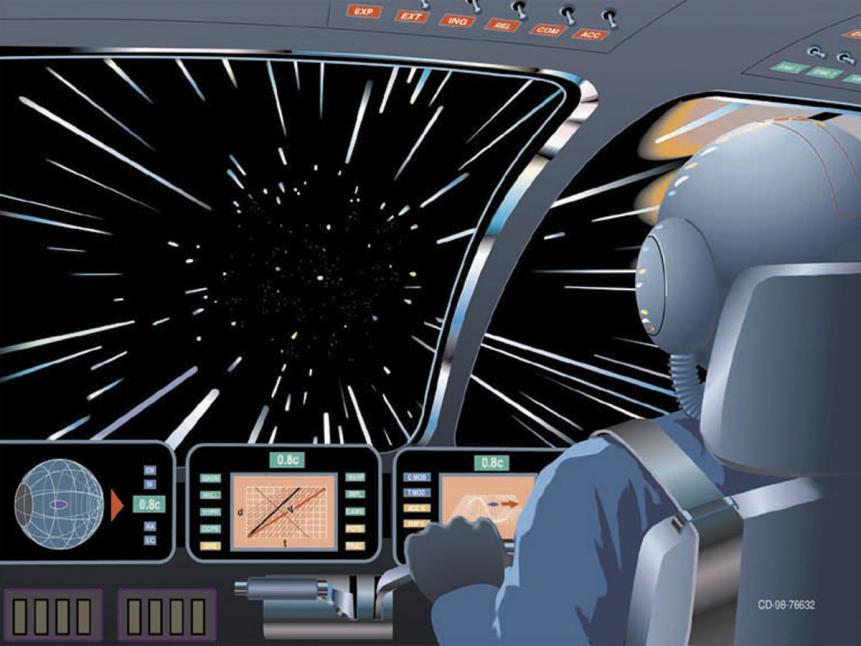
NASA
The New Warp Drive Idea Isn’t Very Warpy

Headline after headline is sharing the exciting news: a pair of theoretical physicists have realized that our sci-fi dreams may be real: it may be possible to build an actual, operational warp drive. One problem: it doesn’t go all that fast.
Let’s start with the physics (such as they are) of warp drives. In 1994, Mexican physicist Miguel Alcubierre figured out how to make a warp drive (sort of) possible. In physics, we understand the nature of gravity through Einstein’s theory of general relativity. General relativity (or just “GR” is you’re feeling brief) tells us that space and time bend, warp, and flex in the presence of matter of energy. In turn, that bending and warping and flexing of spacetime instructs matter how to move.
As Alcubierre discovered, the upshot of all this is that by carefully manipulating spacetime around a spacecraft (say, by compressing the space in front of the craft and stretching it out behind you), you can move without…moving. The space in front of you pulls, the space behind you pushes, and while standing perfectly still you get to move forward as fast as you want…even faster than the speed of light, hence the “warp drive” moniker.

Twitter/Miguel Alcubierre
One problem: An Alcubierre “drive” requires a giant ball of material with negative mass. As in, literally something weighing negative pounds. That’s what you need to make spacetime warp the way you want it to for a…warp drive.
That stinks. Negative mass doesn’t really exist, so you can’t build an Alcubierre drive.
According to the pair of theoretical physicists, however, you can still build a warp drive, it just won’t be as fun. They demonstrated that an incredibly dense shell of matter (as in, taking the entire mass of the Earth and compressing it to make an eggshell), you can affect spacetime in another way.
Remember, “spacetime” includes both space and time, and general relativity allows you to manipulate both. You can slow down or speed up the passage of time just as easily as you can bend and warp space.

NASA
Artist's Concept of Warp Drive
A shell of super-dense material bends both space and time – for any passengers inside the shell, the experience time at a slower rate than the outside the universe. That means that for a few seconds or minutes on their watch, they can appear to travel for hundreds or thousands of years, which is plenty of time to hop from star to star.
The warp drive is here! Almost. The physicists found that this “drive” still needs to be accelerated by a normal propulsion system; the time-bending effects only work when it’s already traveling at constant speed. And no matter what, you can never bend spacetime enough to achieve faster-than-light speeds. To do that still requires matter with negative mass.
So it’s not much of a warp drive, but more of a time-distortion bubble. Which is still a cool thing, theoretically. If you jumped inside one (and used a regular rocket to get you moving), by the time you finished your lunch you could be arriving at a distant solar system. We don’t have any hopes of making one of these in the near future, however, because of the enormous amounts of mass needed to construct the bubble.

NASA/Chandra X-ray Observatory Center
In the meantime, enjoy your life on Earth and keep on dreaming.



















